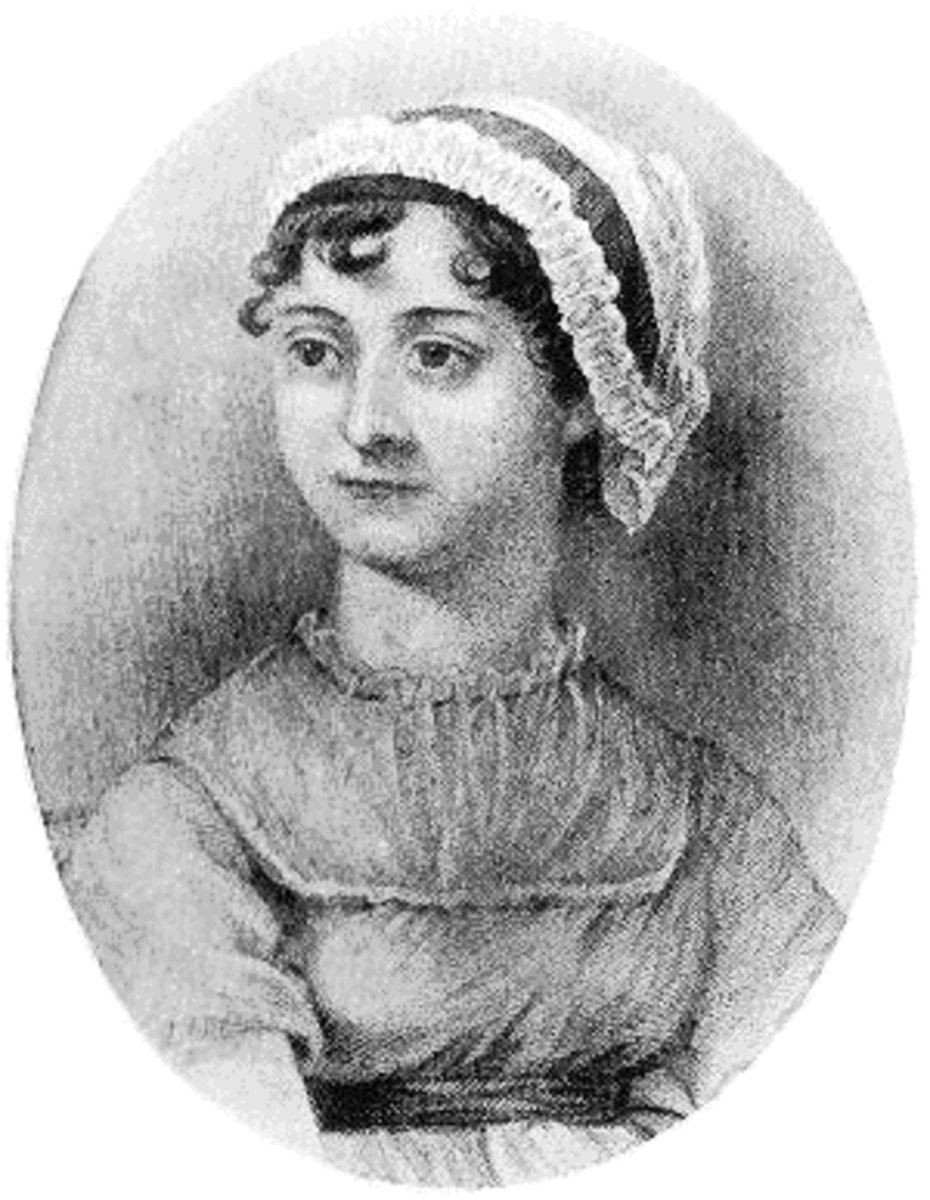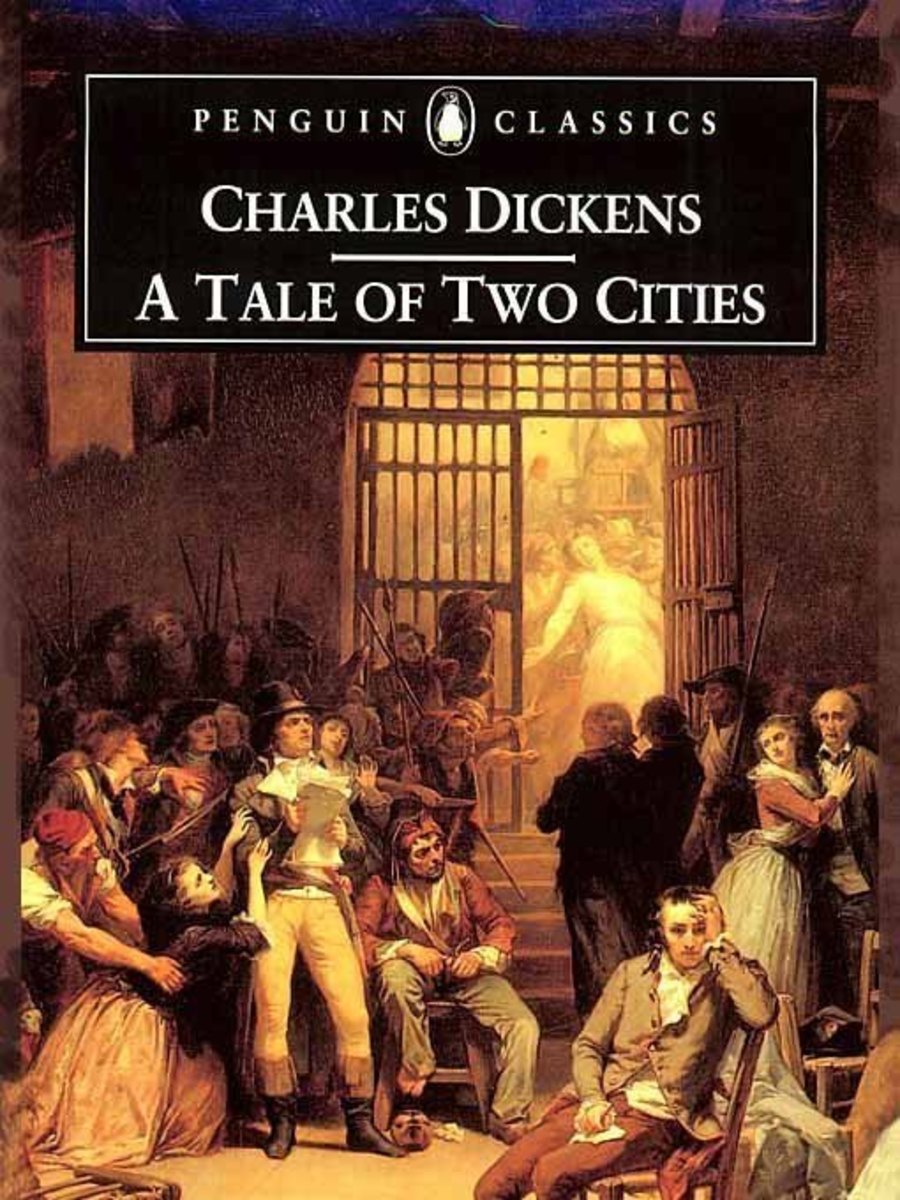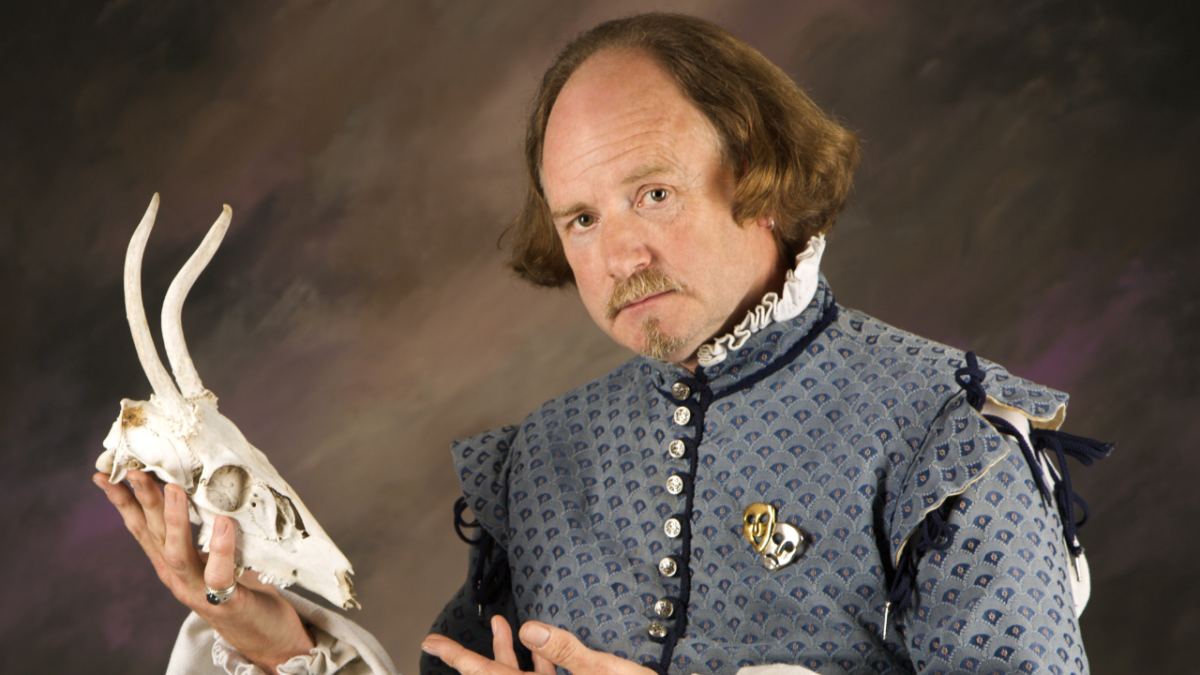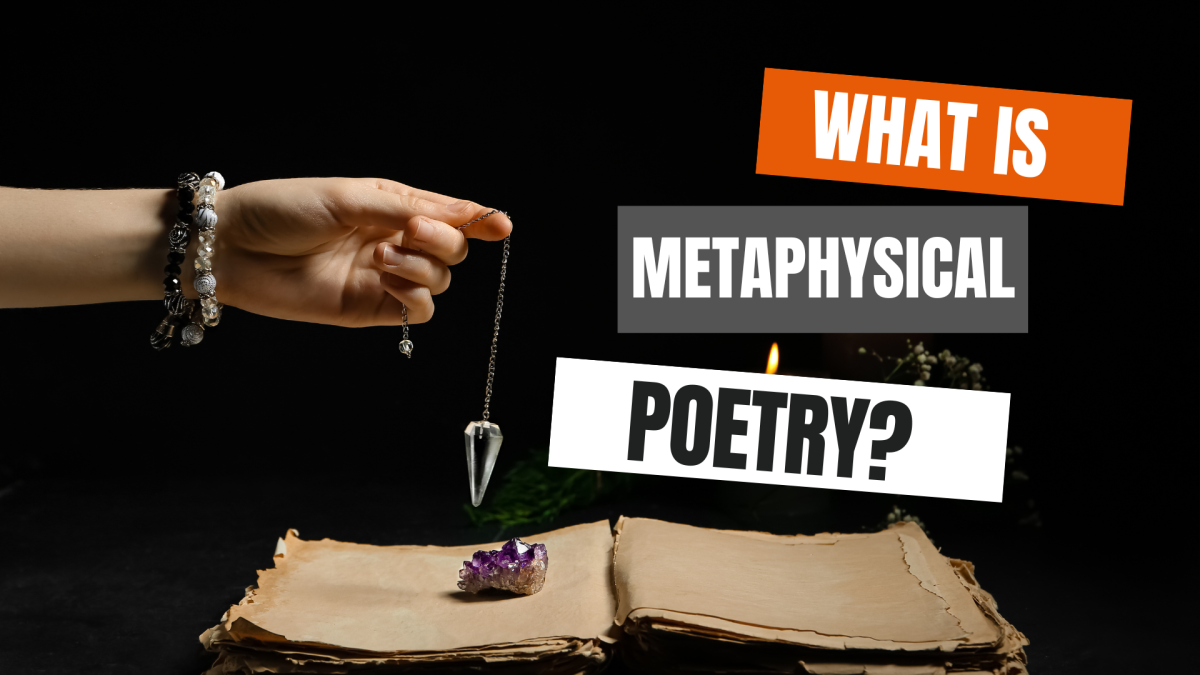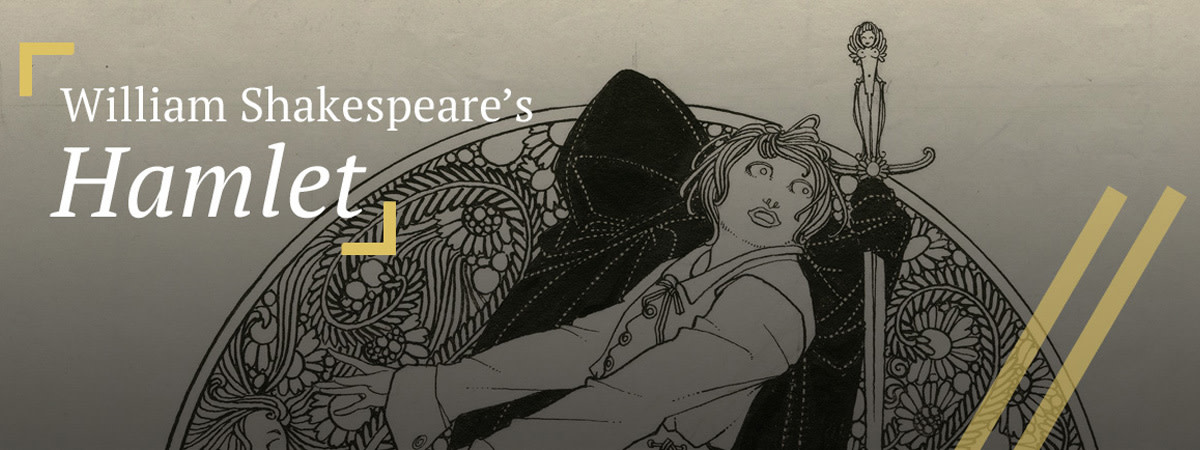- HubPages»
- Books, Literature, and Writing»
- Literature»
- English Literature
Charles Dickens Novels
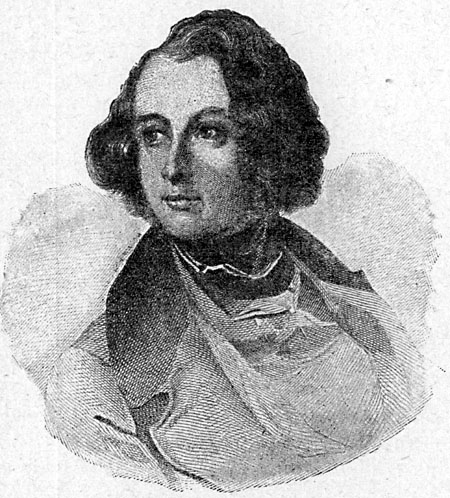
Charles Dickens (1812-1870) is one of the most celebrated nineteenth century English writers. His memorable characters and sharp social criticism have made him an enduring figure in the literary world.
Forced to leave school at a young age to work in a factory, Dickens's childhood was, well, Dickensian. He experienced firsthand many of the ravages of poverty and child labor he'd later go on to write about to great success.
In his teens, he worked as a junior clerk at a law office, another experience that informed later novels. He soon became a journalist, and he began publishing fiction in sketches and installments. His first novel, The Pickwick Papers, published its last installment in 1836.
Dickens spent several years as editor, still publishing novels, novellas, and the occasional play. Many of his stories were published in monthly or weekly installments in famous journals before they were collected together into the complete novels we know today. As a result, many of Dickens's chapters end on cliffhangers, drawing the reader back to the next installment.
He continued writing throughout his life, developing outlandish and remarkable characters. His early experiences and observations led to a caustic social commentary running in many of his novels. His last novel, The Mystery of Edwin Drood, was published posthumously and unfinished.
The Pickwick Papers
When a man bleeds inwardly, it is a dangerous thing for himself; but when he laughs inwardly, it bodes no good to other people.
Charles Dickens, The Posthumous Papers of the Pickwick Club
The Posthumous Papers of the Pickwick Club, known more commonly as The Pickwick Papers, was a series of comic mishaps and loosely-related adventures published in a serial format published from April 1836 through November of 1837.
Dickens, at age 24, was originally hired to essentially provide the story connecting a series of comedic illustrations by Robert Seymour and later by Hablot Knight Browne. Writing under the pseudonym "Boz," Dickens quickly took charge of Pickwick, and before long, the illustrations were made to fit the stories, rather than the other way around.
In these stories, Samuel Pickwick, a wealthy gentleman, and other members of his Pickwick Club travel from London to various locations in England and report back their findings and adventures to others.
As with much of Dickens's later work, The Pickwick Papers is known for its broad, exaggerated characters and the comedic (but often insightful) commentary they provide. The publication became quite popular, launching Dickens's writing career.
Oliver Twist
Please, sir, I want some more.
Charles Dickens, Oliver Twist
First published from February 1837 through April 1839, Oliver Twist is one of Dickens's most well-known and celebrated novels. Orphan Oliver lives in poverty, beginning in a work house before escaping to London and meeting up with the pickpocket Artful Dodger and Fagin, who pull the boy into a juvenile pickpocket gang.
The story follows Oliver's continuing misadventures while providing sharp social commentary on a number of issues facing Victorian England, including child labor, the Poor Law, and the criminal recruitment of street children. The novel is makes especially poignant critique of social class and the terrible lot of those who live in poverty, and its dark humor and sarcasm make notably memorable points.
Oliver Twist's enduring story has long been a favorite. It's been successfully adapted several times, including the stage musical Oliver! and the Academy Award winning 1968 film.
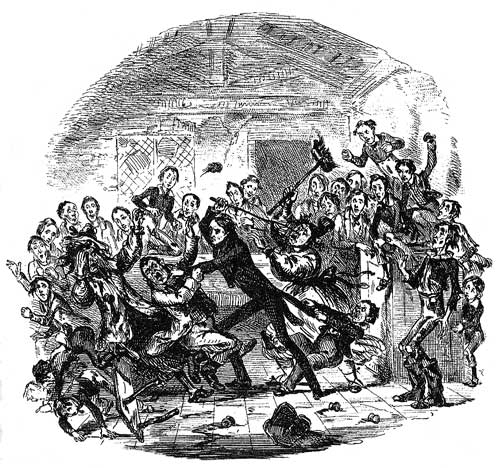
Nicholas Nickleby
The pain of parting is nothing to the joy of meeting again.
Charles Dickens, The Life and Adventures of Nicholas Nickleby
Published April 1838 through November 1839, The Life and Adventures of Nicholas Nickleby is a picaresque novel following young Nicholas through his life. As a young boy, Nicholas loses his father, and after unsuccessfully appealing to his uncle for support for him and the rest of his family, Nicholas is forced to make his own way in the world.
The novel, like most of Dickens's works, is filled with extraordinary and larger-than-life characters and the bizarre names that accompany them. The cruel and abusive Wackford Squeers, Nicholas's wicked uncle Ralph Nickleby, the lecherous nobleman Sir Mulberry Hawk, Nicholas's dear friend Smike and dozens of others encounter Nicholas again and again throughout his story.
Nicholas Nickleby has its fair share of ironic social satire, and though its tone is lighter than Oliver Twist's, it still has some dark and poignant points to make.
The Old Curiosity Shop
If there were no bad people, there would be no good lawyers.
Charles Dickens, The Old Curiosity Shop
From April 1840 through November 1841, Dickens published The Old Curiosity Shop. It features a rare female protagonist in Little Nell, an orphan raised and doted on by her grandfather in his shop of odds and ends. Grandfather works very hard to assure that Nell won't fall into poverty, and eventually takes to gambling in the hopes of accruing enough money to see her comfortable.
It backfires, of course, and Nell and her grandfather find themselves in debt to the evil Daniel Quilp and victimized by Nell's brother Frederick and his eloquent ne'er-do-well friend Dick Swiviller.
Barnaby Rudge
God help the man whose heart ever changes with the world, as an old mansion when it becomes an inn!
Charles Dickens, Barnaby Rudge: A Tale of the Riots of Eighty
Dickens's first historical novel, Barnaby Rudge was published weekly from February to November of 1841. A tale of mystery and suspense set against the backdrop of the Gordon Riots of 1780, Barnaby Rudge begins with the story of an unsolved double murder. Conspiracy, blackmail, and conflicts arise between families, apprentices and masters, religions, and more.
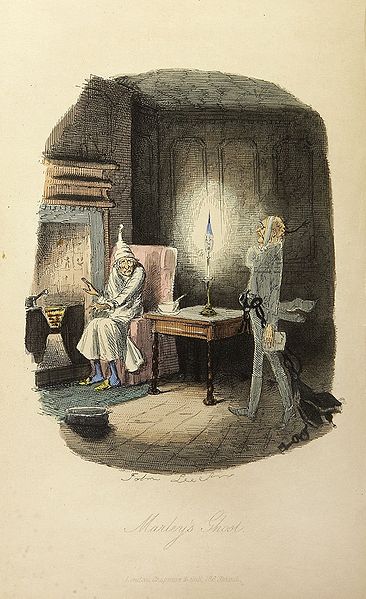
A Christmas Carol
"It is required of every man," the Ghost returned, "that the spirit within him should walk abroad among his fellowmen, and travel far and wide; and if that spirit goes not forth in life, it is condemned to do so after death."
Charles Dickens, A Christmas Carol
Arguably Dickens's most recognizable and famous work, A Christmas Carol was first published whole in 1843. A novella, A Christmas Carol follows one Christmas Eve with frugal and selfish misanthrope Ebeneezer Scrooge, whose ghostly former partner Jacob Marley visits him to encourage him to change his ways. Visits from the Ghosts of Christmas Past, Present, and Yet To Come follow, each teaching Ebeneezer more about himself and the world around him.
A Christmas Carol is a perennial holiday favorite and has been adapted countless times for stage and screen. It's even been performed by Muppets!
Martin Chuzzlewit
Home is a name, a word, it is a strong one; stronger than magician ever spoke, or spirit ever answered to, in the strongest conjuration.
Charles Dickens, Martin Chuzzlewit
From January 1843 through July 1844, Dickens published Martin Chuzzlewit, Martin, the more honorable of the Chuzzlewit clan, falls in love with his wealthy grandfather's nursemaid and is disowned for it. Martin's initial selfishness eventually wanes, allowing him to go through a morally redemptive arc and contrasting him with another Chuzzlewit, Jonas. Jonas and Martin are distantly related, but while Martin's journey leads him on proper paths, Jonas's takes him down to moral corruption.
Dickens visited the United States in 1842, and as a result, Martin Chuzzlewit contains some searing satire of the country, along with his typically sardonic looks at wealth and social class.
The Chimes
A new heart for a New Year, always!
Charles Dickens, The Chimes: A Goblin Story of Some Bells that Rang an Old Year Out and a New Year In
Dickens's second Christmas story, The Chimes, was published in December of 1844. Trotty Veck, on the brink of despair one New Year's Eve, feels called by the bells of the church. In the bell tower, he is met by spirits and goblins who show him visions of the bleak future to show what will happen if he does not restore his own faith and hope in humanity.
The Cricket on the Hearth
Every man thinks his own geese swans.
Charles Dickens, The Cricket on the Hearth: A Fairy Tale of Home
Another of Dickens's Christmas stories, The Cricket on the Hearth was published in December 1845. The eponymous cricket acts as a sort of guardian spirit over the Peerybingle family, chirping in times of happiness and staying silent in times of distress. A Christmas story of love and redemption, The Cricket on the Hearth is probably the second-most well known and loved of Dickens's Christmas stories.
The Battle of Life
A kind and generous man by nature, he had stumbled, by chance, over that common Philosopher's stone (much more easily discovered than the object of the alchemists's researches), which sometimes trips up kind and generous men, and has the fatal property of turning gold to dross and every precious thing to poor account.
Charles Dickens, The Battle of Life
The fourth of Dickens's Christmas books was published in 1846. Two sisters, Grace and Marion, live happily in a small English village. Love and complications arise, as love and complications are wont to do. It is the only of Dickens's Christmas stories not to include a supernatural or at least religious element.
Dombey and Son
Vices are sometimes only virtues carried to excess!
Charles Dickens, Dombey and Son
October 1846 through April 1848 saw the monthly installments of Dombey and Son. Paul Dombey, an industrious but cruel man whose neglect of his family eventually leads to his own downfall. Themes of pride, arrogance, abuse, and deceit run throughout the story. Its deliberately unlikable protagonist has, at times, alienated readers from Dombey and Son, and today it is one of Dickens's lesser-known works.
The Haunted Man and the Ghost's Bargain
Far be it from me to assert that what everybody says must be true. Everybody is, often, as likely to be wrong as right.
Charles Dickens, The Haunted Man and the Ghost's Bargain
Dickens's final Christmas story, The Haunted Man and the Ghost's Bargain, was published in 1848. Professor Redlaw, a chemistry teacher, is depressed and broods often over past wrongs, both of his own doing and those done to him. When a spectral form not unlike his own appears to him and proposes to free him from these burdens by erasing his memory, Redlaw faces a terrible choice.

David Copperfield
Annual income twenty pounds, annual expenditure nineteen nineteen and six, result happiness. Annual income twenty pounds, annual expenditure twenty pounds ought and six, result misery.
Charles Dickens, The Personal History, Adventures, Experience and Observation of David Copperfield the Younger of Blunderstone Rookery (Which He Never Meant to Publish on Any Account)
May 1849 through November 1850 witnessed the publication of David Copperfield. In a preface of a later edition of the novel, Charles Dickens would call it his favorite child, and by many accounts, David Copperfield is the most autobiographical of all of Dickens's works.
Unlike most Dickens work, David Copperfield is written entirely in first person from David's point of view. The novel follows him from childhood into maturity, dealing with the death of his father, his mother's remarriage and his wicked new step-father, his time at boarding school and working in a factory and beyond. Many characters drift in and out of young David's life, all impacting him in some way, for better or worse.
Bleak House
I only ask to be free. The butterflies are free. Mankind will surely not deny to Harold Skimpole what it concedes to the butterflies!
Charles Dickens, Bleak House
Bleak House saw publication between March 1852 and September 1853. Told partly by Dickens's only female narrator Esther Summerson, Bleak House refers to the home Esther comes to live in with her lawyer guardian after her godmother's death. Esther presumes herself an orphan, but in fact, her parentage is one of the central mysteries of the novel. Bleak House features a satirical indictment of the complex and draining English legal system, which by turns consumes and ruins various characters throughout the novel.
Hard Times
There is a wisdom of the head, and ... there is a wisdom of the heart.
Charles Dickens, Hard Times -- For These times
Hard Times, published between April and August of 1854, is by far the shortest of Dickens's full novels. Fed up with the Utilitarian economic theory of the time, Dickens wrote the novel to show the negative consequences such theory would produce in practice, specifically showing its effects on two siblings, Tom and Louisa. Raised only to rely on pure fact and statistic, Tom and Louisa's lives contrast with the circus-raised and generally good-spirited Sissy, who lives her life with creativity and awe.
Little Dorrit
I am the only child of parents who weighed, measured, and priced everything; for whom what could not be weighed, measured, and priced, had no existence.
Charles Dickens, Little Dorrit
Between December 1855 and June 1857, Little Dorrit was published. Using imprisonment as an ongoing theme, the novel follows Arthur Clennam and the Dorrit family, the littlest of whom, Amy, Arthur takes under his wing. The Dorrits begin in severe poverty and severe misery, until an inheritance leaves them wealthier than they ever imagined--but not any happier.
A Tale of Two Cities
It was the best of times, it was the worst of times, it was the age of wisdom, it was the age of foolishness, it was the epoch of belief, it was the epoch of incredulity, it was the season of Light, it was the season of Darkness, it was the spring of hope, it was the winter of despair, we had everything before us, we had nothing before us, we were all going direct to Heaven, we were all going direct the other way.
Charles Dickens, A Tale of Two Cities
Between April and November of 1859, Dickens published his second and more famous historical novel, A Tale of Two Cities. Set during the French Revolution, A Tale of Two Cities has helped shape the cultural understanding of this important historical event. Though it follows fictional characters, this novel gave a memorable face to the revolution decades later. Its two protagonists, Sydney Carton and Charles Darnay, share many physical similarities, if not many inner traits. Darnay, an exiled French aristocrat, and Carton, a brilliant English lawyer, are drawn into the bloody revolution against their wills, pulled from their safe homes in one city, London, to the treacherous streets of the second city, Paris.
Great Expectations
Suffering has been stronger than all other teaching, and has taught me to understand what your heart used to be. I have been bent and broken, but - I hope - into a better shape.
Charles Dickens, Great Expectations
Great Expectations saw publication between December of 1860 and August of 1861. After David Copperfield, it's the second of Dickens's novels written entirely in first person. This time, our narrator is young Philip Pirrip, nicknamed 'Pip' at a young age. Aside from that little encounter with the escaped convict, Pip leads a relatively unremarkable life, living with his horrid sister and wonderful brother-in-law. His life changes forever the day the wealthy, eccentric Miss Havisham asks him to come over and play with her adopted daughter Estella. Estella inspires in Pip a lifelong obsession, and when he unexpectedly comes into a significant fortune and the Great Expectations that accompany it, he is determined to become a gentleman worthy of Estella's esteem--even if it means leaving behind those who care for him deeply.
Our Mutual Friend
I want to be something so much worthier than the doll in the doll's house.
Charles Dickens, Our Mutual Friend
The last novel Dickens completed before his death, Our Mutual Friend was published from May of 1864 through November of 1865. Dealing with the dangers of the easy allure of money, the drowned bodies start to pile up, beginning with that of John Harmon, the presumed heir to a garbage heap that made his father a fortune. The rubbish heap--and the money it promises--drives many unsavory characters to unsavory deeds.
The Mystery of Edwin Drood
How beautiful you are! You are more beautiful in anger than in repose. I don't ask you for your love; give me yourself and your hatred; give me yourself and that petty rage; give me yourself and that enchanting scorn; it will be enough for me.
Charles Dickens, The Mystery of Edwin Drood
The Mystery of Edwin Drood began its publication in 1870, but before it was completed, Charles Dickens died after suffering a stroke. The eponymous Edwin Drood is arranged to marry Rosa, though after sharing his misgivings with a good friend, he breaks off the engagement and soon after disappears. The mystery of just what happened to this young man leads the rest of the novel.
Only six of the planned twelve segments were ever written, and as a result, the identity of the murderer remains a mystery to this day. The mystery of the Mystery is quite enduring. The novel was popularly adapted into a musical comedy. The play includes several endings, and at each performance the audiences are polled about whom they think is the guilty party. In this way, the audience votes on the ending it considers best for the show, and each performance ends accordingly.
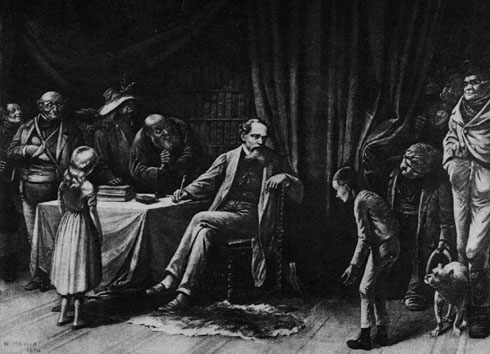
Legacy
Charles Dickens's stories, characters, and searing satire have endured for generations. His works are still regularly studied in schools across the globe. His twenty novels and novellas have inspired dozens of adaptations for stage, radio, television, and film. He's even had words added to the dictionary on his account, as the term 'Dickensian' has come to mean squalid or poverty-stricken--like the conditions his Dickensian orphans often found themselves in.
His colorful, memorable, and larger-than-life characters and situations may seem at times outlandish to the modern reader, but his influence on both literature and culture is undeniable.


